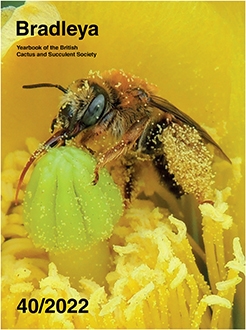Phemeranthus punae (R.E.Fr.) Eggli & Nyffeler (Montiaceae) is a perennial geophytic herb from the pre-Puna vegetation in the Andes of south-west Bolivia and north-west Argentina. Flowering plants have been observed for several seasons. Flowers are almost exclusively visited by at least three species of ants (Formicidae: likely Forelius pruinosus Roger, Linepithema sp. and Camponotus bruchi Forel). The ants move freely and rapidly on the plants and switch to neighbouring plants within less than five seconds. Pollen grains adhere to legs and bodies of the ants, which visit the flowers to feed on the nectar. The low stature of P. punae, its horizontally spreading to ascending inflorescences and the small flowers conform to the ant pollination syndrome characteristics formulated by Hickman (1974). It is concluded that the observed ants are the pollinators of the species in the study area.
How to translate text using browser tools
23 May 2022
The pollination ecology of Phemeranthus punae (Montiaceae) in southern Bolivia
Urs Eggli,
Mario Giorgetta
ACCESS THE FULL ARTICLE

Bradleya
Vol. 2022 • No. 40
May 2022
Vol. 2022 • No. 40
May 2022
Bolivia
ecology
Formicidae
Montiaceae
Phemeranthus
pollination




